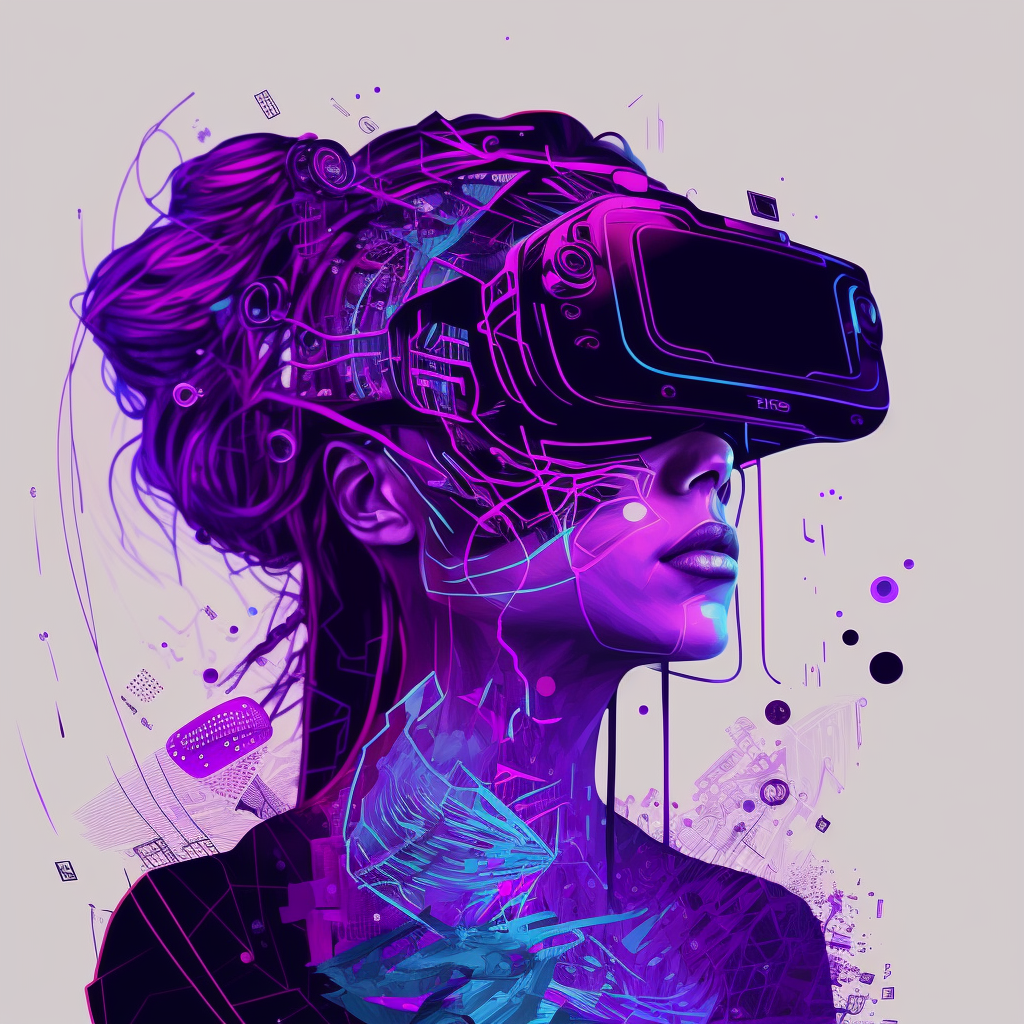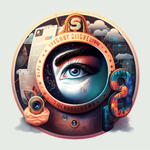The internet has evolved significantly since its inception, and we now stand at the cusp of a new era: web3. As the next-generation internet, web3 aims to revolutionize the way we interact with data, logic, and interfaces. This paradigm shift is fueled by the convergence of three cutting-edge technologies: blockchain, artificial intelligence (AI), and augmented reality (AR), virtual reality (VR), and the Internet of Things (IoT). In this blog post, we will take a deep dive into the synergy between these technologies and explore how they are poised to redefine our digital experiences, solve complex challenges, and shape the future.
- Blockchain: The Decentralized Data Layer
Blockchain, the underlying technology behind cryptocurrencies like Bitcoin and Ethereum, is a decentralized and distributed ledger that ensures data security, transparency, and immutability. In web3, blockchain serves as the foundational data layer, enabling decentralized applications (dApps) and smart contracts that can operate without the need for intermediaries.
Example: Decentralized Finance (DeFi) is a prime example of the power of blockchain technology in web3. DeFi platforms allow users to access financial services like lending, borrowing, and trading without relying on traditional banks, fostering financial inclusion and democratizing access to wealth-building tools.
- AI: The Intelligent Logic Layer
Artificial intelligence (AI) is the driving force behind the logic layer of web3, enabling smart decision-making and automation. AI algorithms can analyze vast amounts of data and make predictions, recommendations, and decisions, creating a more responsive and adaptable digital ecosystem.
- AR/VR/IoT: The Immersive Interface Layer
AR, VR, and IoT technologies are transforming the way we interact with digital environments. These technologies form the interface layer of web3, providing immersive, multisensory experiences that bridge the gap between the physical and digital worlds.
Example: In the emerging metaverse, users can explore virtual worlds and interact with digital assets and other users through AR/VR devices, powered by blockchain and AI. This convergence enables new economic models, social experiences, and creative opportunities.
The Future of web3: Unleashing the Potential of the Digital Trinity
The seamless integration of blockchain, AI, and AR/VR/IoT technologies in Web3 has the potential to bring about significant innovation and disruption across various industries. In this section, we will explore several examples of the transformative potential of this digital trinity in greater detail:
Supply Chain Management:
web3 technologies can revolutionize supply chain management by enhancing transparency, traceability, and efficiency. Blockchain can provide a secure, decentralized ledger for tracking products and transactions, ensuring data integrity and reducing the risk of fraud. AI can optimize logistics and inventory management by analyzing patterns and predicting demand, while IoT devices can monitor the real-time status of goods in transit. Additionally, AR/VR can offer immersive training and remote assistance for supply chain professionals, improving their decision-making and productivity.
Example: VeChain, a blockchain-based platform, combines IoT and AI to provide end-to-end traceability and real-time data on products in the supply chain. By offering businesses and consumers unprecedented visibility and control, VeChain contributes to a more transparent, sustainable, and efficient global supply chain.
Entertainment and Media:
The convergence of web3 technologies can give rise to new forms of entertainment and media consumption, offering users more immersive, personalized, and interactive experiences. Blockchain can facilitate decentralized content distribution and ensure fair compensation for creators, while AI can generate personalized recommendations and tailor content to individual preferences. AR/VR can provide users with immersive experiences, ranging from virtual concerts to interactive storytelling, bridging the gap between the physical and digital worlds.
Example: Decentraland, a virtual reality platform powered by the Ethereum blockchain, allows users to create, explore, and monetize content in a decentralized metaverse. With AI-driven personalization and AR/VR-enhanced experiences, Decentraland represents the future of digital entertainment and social interaction.
Environmental Sustainability:
web3 technologies have the potential to play a crucial role in addressing environmental challenges and promoting sustainability. Blockchain can ensure transparency and accountability in environmental initiatives, from carbon credit trading to natural resource management. AI can analyze vast amounts of data to identify patterns, optimize resource use, and predict the impact of various actions on the environment. IoT devices can monitor and control emissions, energy consumption, and waste production in real-time, while AR/VR can raise awareness and foster engagement in environmental conservation efforts.
Example: The Ocean Protocol leverages blockchain, AI, and IoT to create a decentralized data exchange for the sharing of environmental data. By enabling researchers, governments, and businesses to collaborate and access valuable insights, the Ocean Protocol can drive innovation and action in the fight against climate change and environmental degradation.
Governance and Democracy:
web3 technologies can empower citizens and promote more transparent, accountable, and responsive governance. Blockchain can enable secure, tamper-proof voting systems and ensure the integrity of public records. AI can analyze public sentiment and policy impacts, helping decision-makers craft more effective legislation and respond to the needs of their constituents. AR/VR can facilitate virtual town halls and immersive civic engagement experiences, while IoT can enable real-time monitoring of public infrastructure and services.
Example: Estonia is a whole digital Republic secured by the blockchain. They have implemented a blockchain-based voting system for local elections, enhancing transparency, security, and trust in the electoral process. In addition, the blockchain protects the data of e-Banking, e-Healthcare, and/or other critical services in Estonia. Combined with AI-driven sentiment analysis and IoT-enabled smart city infrastructure, such initiatives can contribute to more inclusive, democratic, and responsive governance.
In conclusion, the synergy between blockchain, AI, and AR/VR/IoT in web3 holds tremendous potential to drive innovation, solve complex challenges, and reshape industries. By harnessing the power of this digital trinity, we can unlock new opportunities and create a more inclusive, efficient, and sustainable future for all.
web3: Reshaping Digital and Physical Experiences
web3, powered by the synergy between blockchain, AI, and AR/VR/IoT, is poised to redefine the way we interact with the digital world. By embracing this paradigm shift, we can unlock the potential of these technologies to solve complex challenges, create new opportunities, and shape a more inclusive, secure, and innovative future. As we embark on this journey into the web3 era, it's essential to foster a sense of curiosity, openness, and collaboration. This will allow us to harness the power of these technologies and create a digital landscape that is not only efficient and secure but also more human-centric and equitable.
In the coming years, we can expect the boundaries between the physical and digital worlds to blur even further, as blockchain, AI, and AR/VR/IoT continue to evolve and intertwine. As we navigate this uncharted territory, it's crucial to think differently about the challenges and opportunities that lie ahead, and to foster a sense of trust and transparency among all stakeholders involved.
By embracing the power of these disruptive technologies, we can make more informed decisions, solve complex problems, and create a digital world that is more aligned with our values and aspirations. The web3 era holds immense potential to transform industries, empower individuals, and redefine the way we experience the world around us.
The future of web3 is a vast and exciting landscape, filled with untapped potential and uncharted possibilities. As we continue to explore this new frontier, it's essential to keep an open mind, challenge conventional wisdom, and embrace the spirit of innovation that has driven the internet's evolution from its very beginning. By doing so, we can ensure that web3 is not only a technological revolution but also a force for positive change in the world.
The synergy of blockchain, AI, and AR/VR/IoT in web3 has the potential to reshape our digital experiences, solve complex challenges, and unlock unprecedented opportunities for innovation. As we collectively embark on this exciting journey, it's crucial to approach the topic with curiosity, empathy, and an open mind. By doing so, we can harness the power of these technologies to build a brighter, more inclusive, and sustainable future for all.






Comments